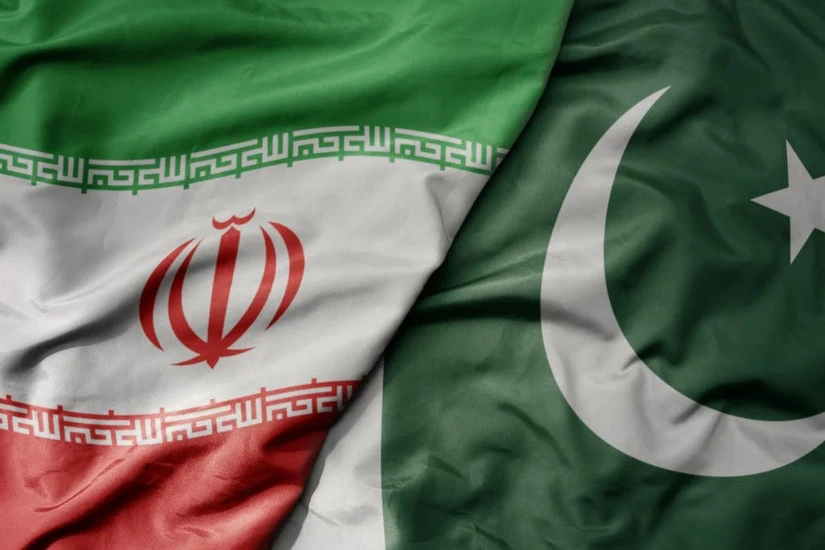Trade against turbulence: How Iran and Pakistan seek stability through ITI
- 06 August, 2025
- 09:50

Amid rapid global changes and growing uncertainty on the international stage, transport and trade corridors have gained special significance as tools for economic development and strengthening regional cooperation. In this context, many countries are striving to create reliable and cost-effective supply chains.
Iranian President Masoud Pezeshkian, during a recent visit to Islamabad, announced plans to accelerate trade growth with Pakistan by more than threefold—from $3 billion to $10 billion. Pezeshkian also noted that Iran and Pakistan have signed more than ten agreements across various sectors. The agreements include the expansion of transit routes, including maritime, rail, and road connections, the creation and expansion of border markets, and the institutionalization of joint free economic zones.
To achieve this goal, the two countries will seek to maximize the use of the Islamabad–Tehran–Istanbul (ITI) railway corridor. This route was first launched in 2009, then relaunched in 2021, but it has yet to reach full operational capacity and currently requires modernization. ITI stands out as one of the key initiatives capable of reshaping trade and logistics networks connecting South Asia, the Middle East, and Europe. Spanning 6,543 kilometers, this railway corridor aims to provide faster and more efficient transport of goods from Pakistan through Iran and Türkiye, ultimately accessing European markets. For Azerbaijan, which occupies a strategic position at the crossroads of continents, ITI opens up opportunities to strengthen its role in Eurasian trade, making this project highly relevant in the current context.
China’s trade influence continues to expand and deepen, creating an opportunity for Eurasia to avoid relying exclusively on a single economic giant—the United States—and instead select partners based on the political landscape. In a globalized world, where economies are tightly interconnected, any geopolitical shifts can trigger crises. The new US administration has clearly demonstrated the risks and challenges posed by trade wars.
The war between Russia and Ukraine and the closure of most transport routes through Russian territory have forced countries to diversify their supply chains for essential goods to sustain and develop their economies, even under harsh conditions. Iran and Pakistan are no exception.
Pakistan has a developing mixed economy, which, according to the International Monetary Fund, currently ranks 38th by nominal GDP and 25th by purchasing power parity (PPP). Despite positive trends in certain sectors, the structure of its foreign trade remains vulnerable. In these circumstances, the development of transport and logistics routes such as the Islamabad–Tehran–Istanbul railway corridor becomes not merely desirable but essential for Pakistan. Reliable, low-cost, and direct transportation links with Iran, Türkiye, and onward to Europe offer a way to diversify external markets, reduce logistics costs, and stimulate export-oriented production. Furthermore, participation in multimodal corridors, including potential integration with the Middle Corridor through Azerbaijan, allows Pakistan to join broader Eurasian supply chains, which in the long term can help balance trade and increase foreign currency inflows.
For Iran, revitalizing this route is equally important. This primarily concerns strengthening Iran’s role as a transit hub—something Tehran has repeatedly emphasized in recent years in the context of regional transport routes, including those passing through the South Caucasus.
Ultimately, this route benefits all potential participants: China supplies goods to Pakistan, where they are transformed into Sino-Pakistani products such as textiles and electronics, then move to Iran and from there either to the South Caucasus—including Azerbaijan as a key Middle Corridor player—or to Türkiye. In both scenarios, goods can then flow into Europe. Expanding supply routes drives economic growth for all countries: China consolidates its position as a global supplier, Pakistan gains access to new markets while bypassing unstable Afghanistan, Iran strengthens its transit potential, and Azerbaijan and Türkiye integrate ITI with existing corridors, enhancing their logistics networks.
In addition, the Middle Corridor and ITI link Central Asia with Pakistan, thereby mitigating geopolitical risks and expanding opportunities for increased freight volumes. This multilateral approach creates a synergistic effect: economies grow through higher trade volumes, regions remain engaged, and infrastructure development accelerates.
Thus, the development of ITI can become not just a logistical solution but also a tool for ensuring prosperity and stability for all participants in the Eurasian space.
An important confirmation of this course was the Economic Cooperation Organization (ECO) summit held in early July in Khankandi, Azerbaijan, where member state leaders expressed their commitment to expanding trade relations and strengthening regional cooperation. Many participants at the ECO summit in Khankandi highlighted the need to enhance transport connectivity and improve freight logistics.
Therefore, exactly one month later, on August 3, 2025, we see concrete steps by ECO members to implement the agreements reached in Khankandi. These actions underscore the region’s commitment to integration and joint development.
Analytical Department, Report
